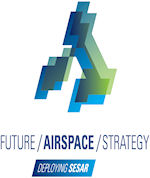 Proposals which aim to enhance the UK’s airspace system were discussed on 12 December at a Future Airspace Strategy (FAS) conference organised by the UK CAA. Leading aviation figures discussed increases in airspace capacity, improvements to flight efficiency, and a reduction of aviation’s environmental impact
Proposals which aim to enhance the UK’s airspace system were discussed on 12 December at a Future Airspace Strategy (FAS) conference organised by the UK CAA. Leading aviation figures discussed increases in airspace capacity, improvements to flight efficiency, and a reduction of aviation’s environmental impact
Among the key aviation figures providing their views were CAA Chief Executive Andrew Haines, easyJet Chief Executive Carolyn McCall, Heathrow Airport Chief Executive Colin Matthews, and NATS Managing Director of Operations Martin Rolfe.
They heard that the UK’s current airspace system has not been significantly updated for over 40 years and that the FAS project will aim to deliver significant benefits for air passengers, the aviation industry and the environment.
Planned improvements include:
- Allowing aircraft continuous climb-outs on takeoff that get aircraft to their optimum cruising altitude as quickly as possible;
- Providing aircraft with more efficient routeings that save time and fuel;
- Better management of arrivals at airports, such as reducing the time aircraft hold before landing;
- Linking the whole aviation network together to share up-to-date flight information, thereby enabling better operational decisions and increasing resilience to unexpected events;
- Using the latest technology throughout the system to increase airspace capacity and safety.
This includes the use of Performance Based Navigation (PBN) that allows aircraft to use satellite navigation, instead of ground based navigation aids, to fly much more accurate routes. The CAA announced at the conference that it will be consulting on a mandate to implement PBN in certain areas of the UK’s controlled airspace.
These organisations will now start work on implementing the strategy in the UK and tying it into European projects such as the European Commission’s Single European Sky initiative, which aims to streamline the way airspace is used throughout the continent.
Work on some of the FAS projects is already underway and it will ensure UK airspace is fit for purpose out to 2030.
More information on the Future Airspace Strategy can be found at www.caa.co.uk/fas